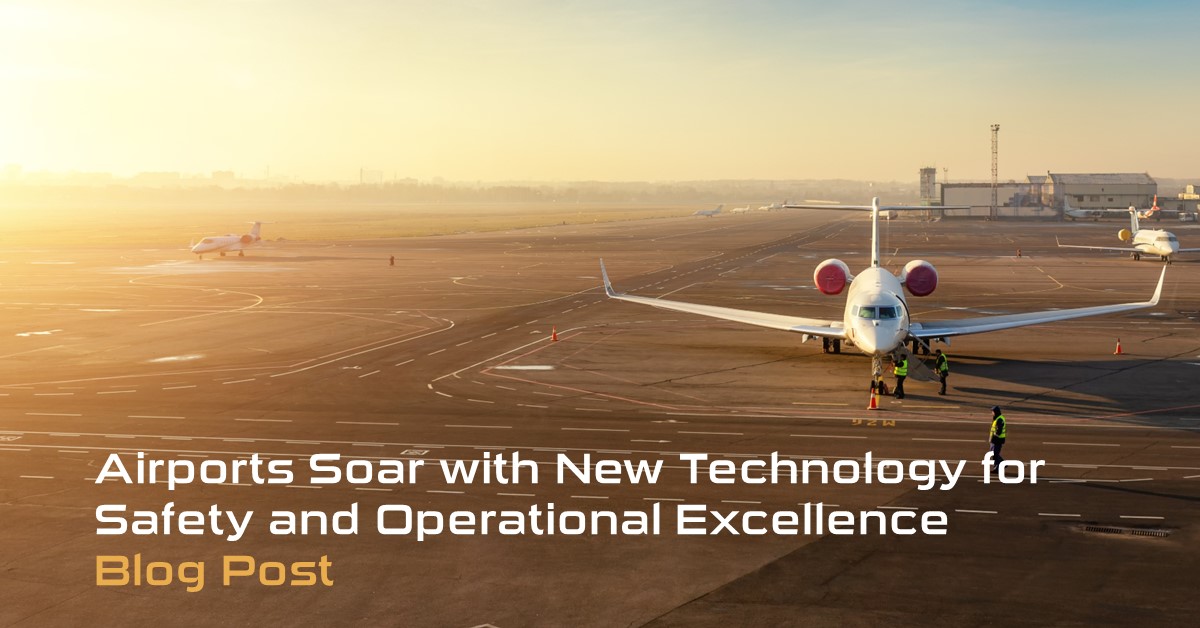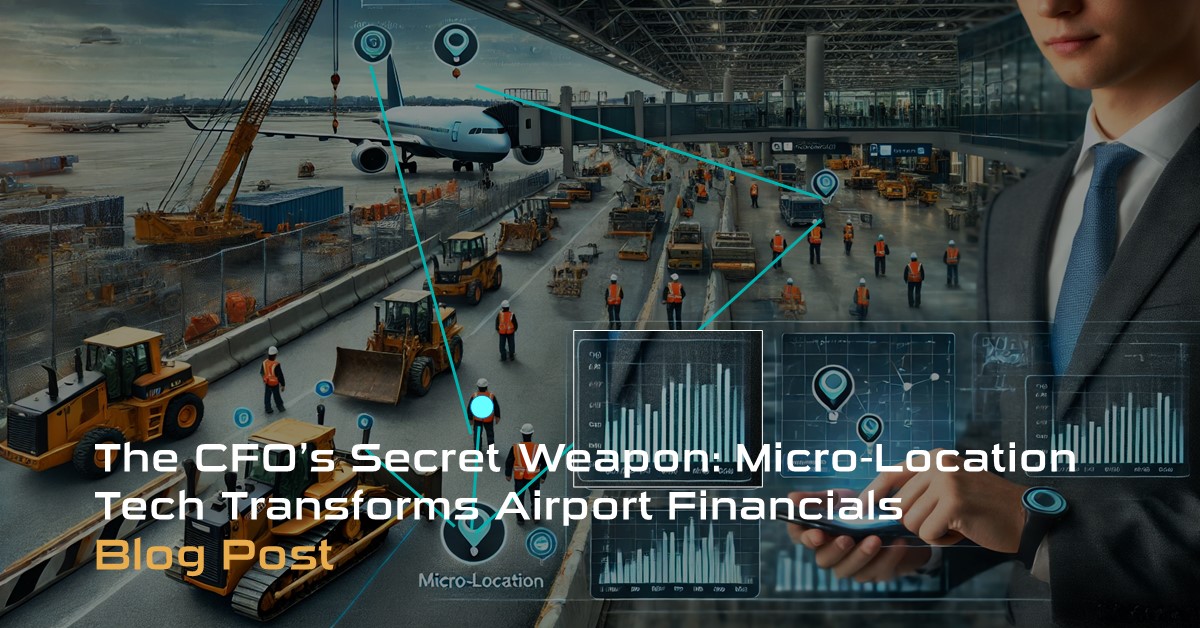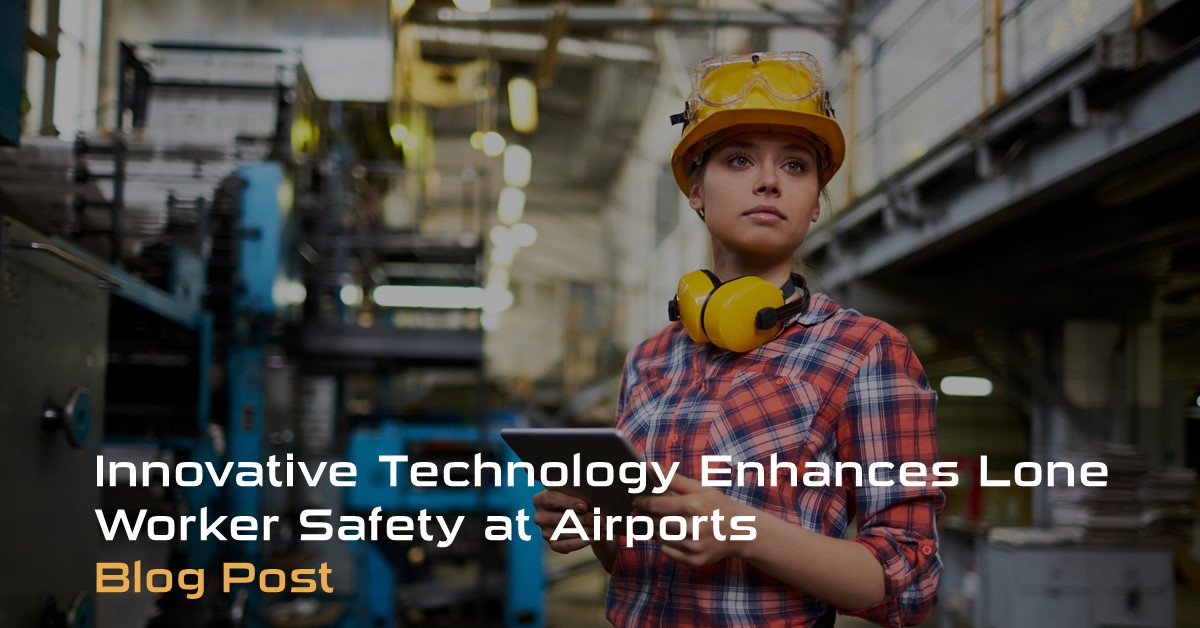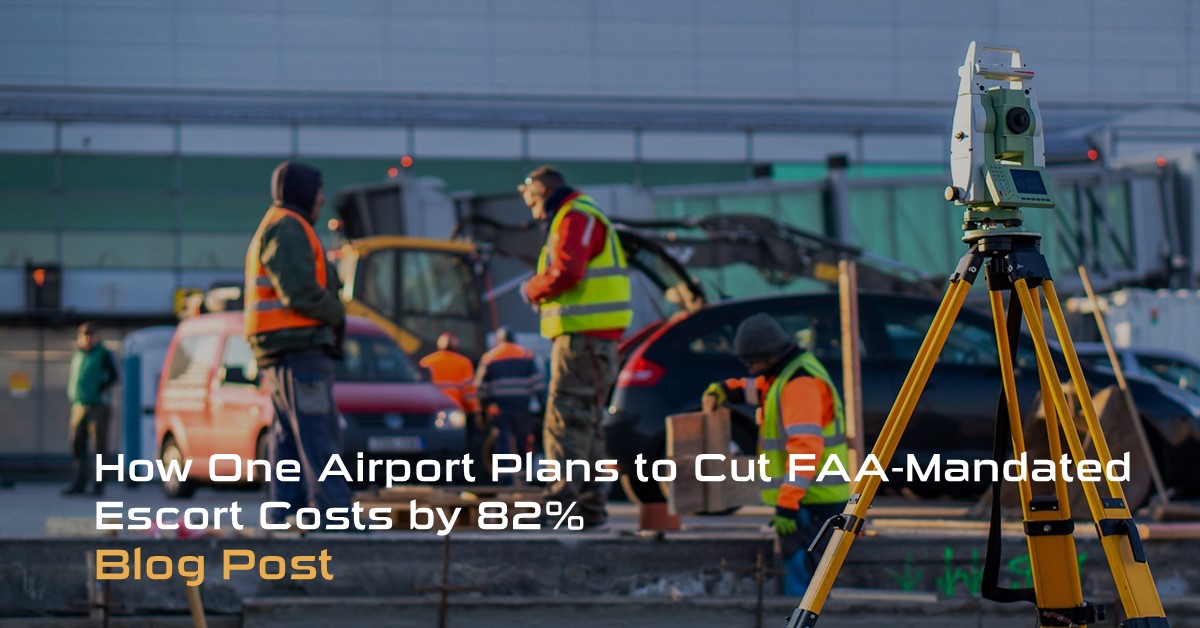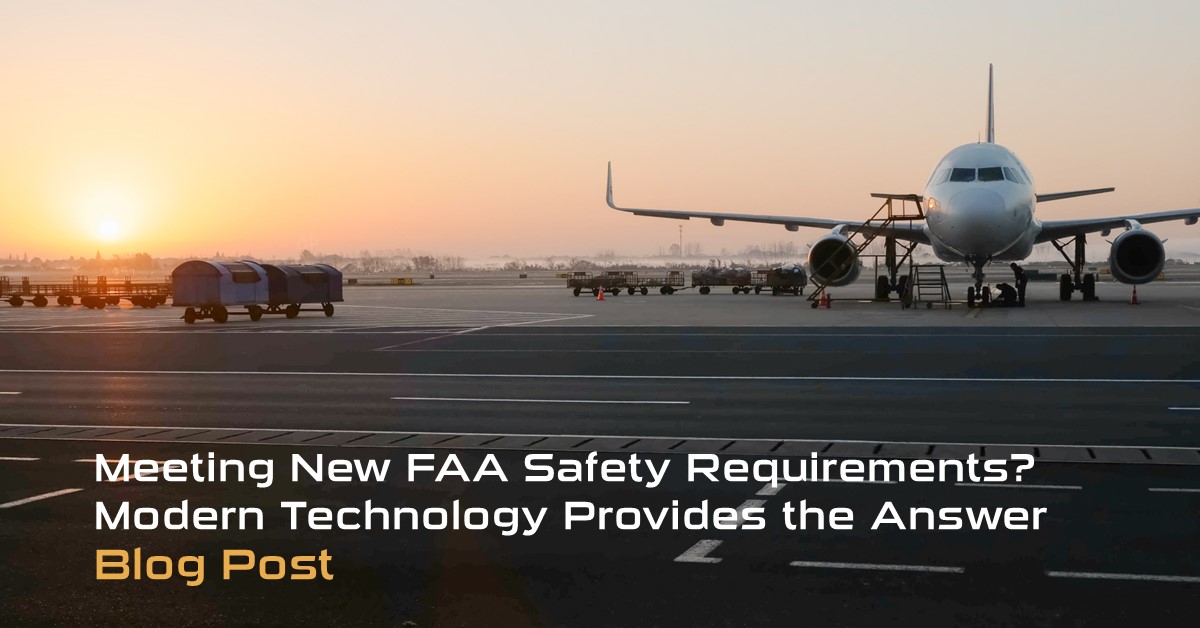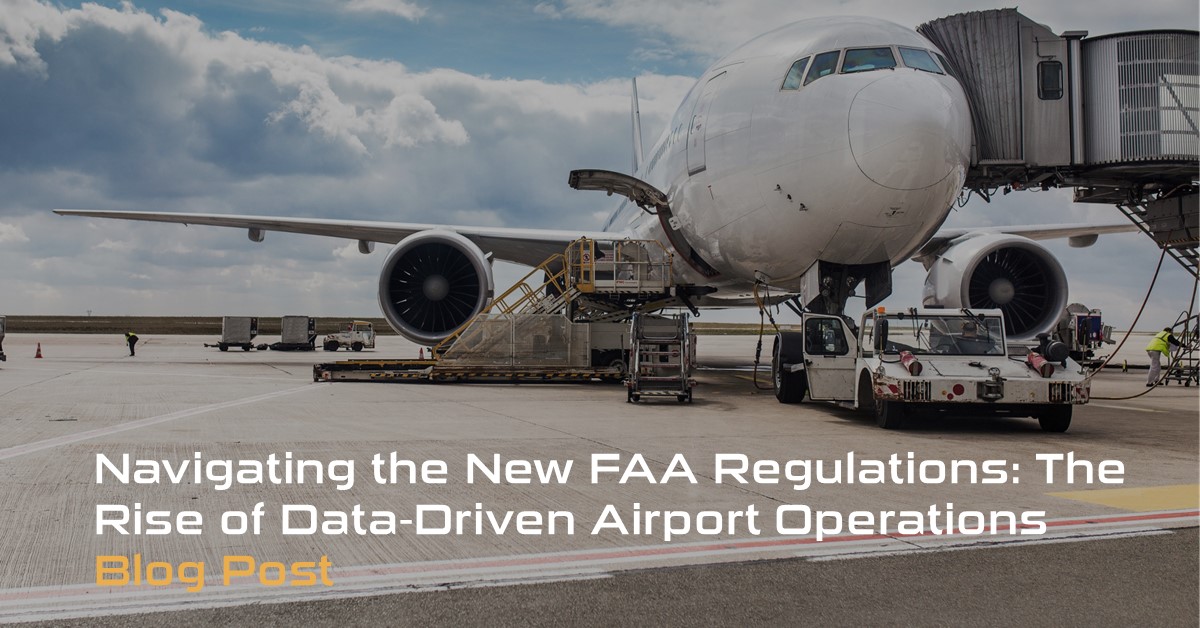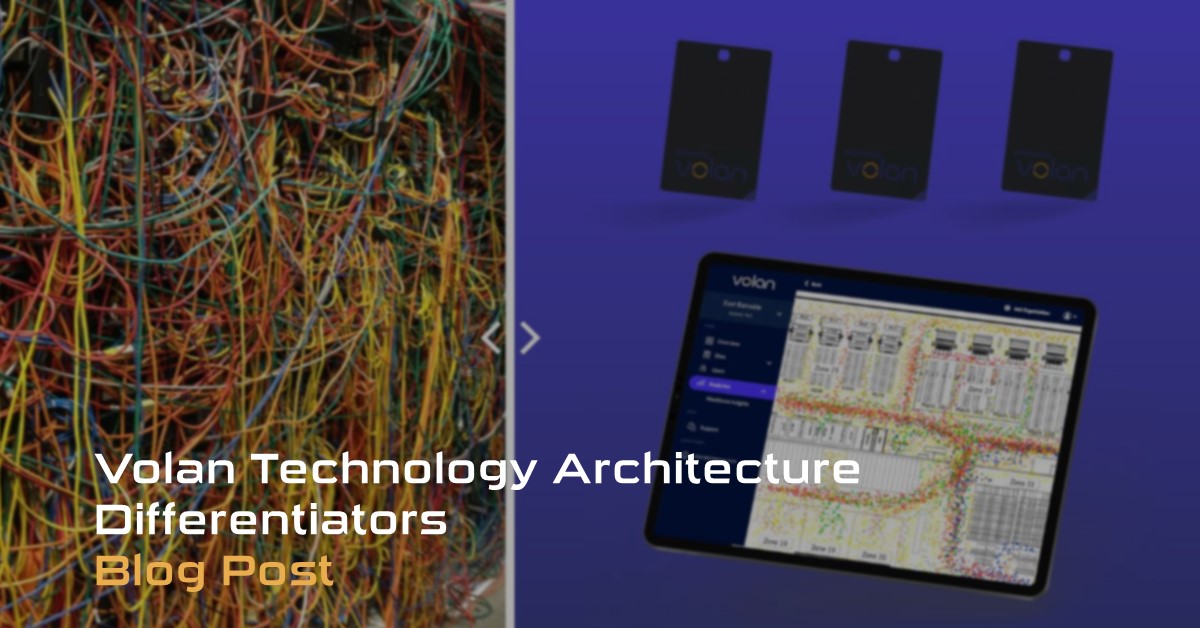Airports Soar with New Technology for Safety and Operational Excellence
Note: This article, Airports Soar with New Technology for Safety and Operational Excellence, was originally posted on the website of the Airports Council International-North America (ACI-NA) which is the voice of North American airports, representing local, regional and state governing bodies that own and operate commercial airports in the United States and Canada.
One thing I’m hearing a lot about from airport operators is the stress around ensuring compliance with the FAA’s Safety Management System rule that went into effect this year. The new rule requires airports to do a better job detecting incidents, analyzing what happened, capturing data, and reporting it all to stay compliant.
More than 250 major US airports are affected, and they’re feeling the burden – especially when it comes to monitoring outdoor areas like runways, taxiways and ramps. That’s where a lot of the riskier incidents can occur with aircraft, vehicles, equipment and personnel. Traditional methods just aren’t cutting it.
Traditional outdoor monitoring methods for airports just aren’t cutting it.
Think about it – at any given time there are thousands of people and vehicles moving on an airfield. Fuel trucks, catering vehicles, luggage teams, maintenance crews with mowers and plows, not to mention all the construction equipment for major projects. One mishap, like a lawn tractor veering into a restricted area, could be a serious safety concern.
Then you’ve got the added challenge of properly escorting and monitoring any third-party employees and contractors that need access to secure areas. Airports have to assign a human escort to supervise outside workers to maintain security protocols. But that’s extremely labor intensive, costly, and prone to errors with escorts getting fatigued or distracted.
What airports really need is a technological solution to achieve the heightened monitoring, incident detection and safety forensics the FAA now mandates. A system providing omnipresent awareness of every vehicle and person’s location, able to instantly identify potential threats and rapidly alert the right personnel.
That’s why innovative airports are deploying affordable micro-location technology across their properties. Unlike traditional GPS, cellular service or Radio Frequency ID, which is too broad or costly, these new systems use Internet of Thing (IoT) sensors and small wearable locators to pinpoint the real-time geography of every asset within 1-2 meters.
One major Midwest airport rolled out a turnkey geofencing solution that works like a virtual fence-line you can construct anywhere. Using credit card-sized locators on vehicles and badges, it tracks the precise positions of all assets simultaneously, both airport resources and any contractors needing access to secure areas.
If a vehicle strays into a restricted zone, it instantly triggers an alert identifying the location and equipment involved. For safety incidents, it captures granular forensic data on who was where and when the event occurred to streamline investigations and reporting.
However, the benefits go way beyond just complying with the FAA’s new requirements. This operational data is a gold mine for optimizing processes, resource allocation and cost savings.
Airport teams can visualize traffic patterns and identify inefficient vehicle routings or instances of excessive idling to reduce emissions and fuel costs. They can analyze the utilization of specific equipment types to ensure assets are being maximized. The data enables accurate labor forecasting and workforce planning based on proven demand.
There are a number of other use cases, too, like quickly locating any misplaced or stolen asset, ensuring contractors adhere to specified routes and schedules, automating lone worker policies, and more.
The IoT approach is flexible and scalable, so airports can start focused but keep expanding capabilities over time. Deploying it is quick and affordable – the locators and gateways are solar-powered, requiring no hard-wiring or costly infrastructure. Full facility coverage can go live in days versus months for traditional systems.
At the end of the day, airports can’t afford to rely on manual monitoring that fails to provide the rigorous safety oversight required by the FAA. The threat of violations is serious from a cost and negative publicity standpoint. Precise location data and analytics are what’s needed to identify risks, demonstrate compliance and ensure the safe and efficient operations of our nation’s airports.
This kind of innovative thinking will separate the leading airports in the years ahead. Those embracing affordable IoT solutions today will be best positioned to handle the challenges of tomorrow – whatever new operational or regulatory requirements emerge.
To learn more about our Volan technology, please contact us.
Our Solutions
Our construction barrier technology provides geofenced barriers for airport construction sites to keep workers out of restricted areas and reduces the costs for worker escorts. Airport construction projects are never-ending, have many workers, and regulations require full-time monitoring of worker location. Volan’s technology can provide alerts within 2-3 seconds if a worker moves into a restricted space, along with the precise location of the worker and a live map view. Visit our Solutions for Airports page.


